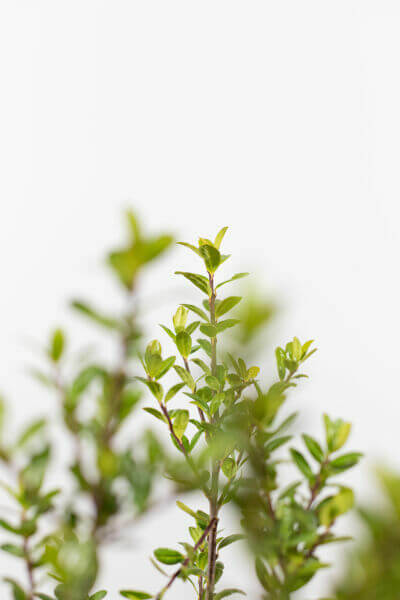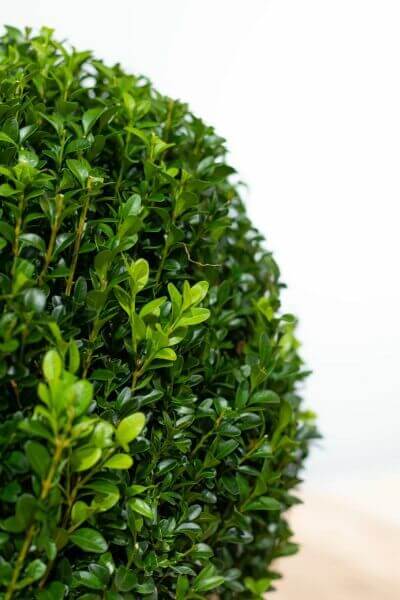Best Hedging Plants For Park Landscaping
Best Hedging Plants For Park Landscaping
Blog Article
Best Hedging Plants For Full Sun
Enhance your garden's attraction with lavish hedge ranges such as Yew (Taxus), Thuja, Laurel, Photinia, and Bamboo, commemorated for their structural stability and ecological advantages.
Yew and Thuja supply evergreen protection and winter season strength, while Laurel uses fast development and broad, fragrant leaves.
Photinia adds seasonal beauty with its lively red foliage, and Bamboo lends a low-maintenance, peaceful ambiance.
These hedges enhance air quality, minimize noise, and create tranquil, personal areas.
Proper planting, spacing, and maintenance make sure vigorous growth and ecological consistency.
Explore how these lush ranges can elevate your garden's appeal and wellness.
Key Takeaways
Change Your Garden With Lush Hedge Varieties
- Select Yew for its dense, evergreen development and unrivaled longevity.
- Select Laurel for its fast development and broad leaves, guaranteeing quick personal privacy.
- Choose Photinia for its dynamic seasonal foliage, which turns a striking dark red.
- Utilize Bamboo for a low-maintenance, winter-hardy hedge with visual appeal.
- Area plants 2-3 per meter and prune regularly for optimum growth and health.
Popular Hedge Plants
When transforming a garden with lavish hedge varieties, it's necessary to consider popular hedge plants such as Yew, Thuja, Laurel, and Photinia due to their special qualities and advantages.
Yew (Taxus) is highly respected for its longevity and thick, green growth, making it a prime option for enduring landscapes.
Thuja is noted for its evergreen foliage and robust winter season durability.
Photinia includes seasonal vibrancy with red leaves that darken over time, developing dynamic visual appeal.
Laurel provides fast development and fragrant, broad leaves, perfect for quick privacy.
In Addition, Bamboo is an outstanding option for ambiance, providing a low-maintenance, winter-hardy alternative that boosts the garden's aesthetic with its classy, swaying canes.
These selections deal with a variety of horticultural needs and preferences.
Advantages of Garden Hedges
Garden hedges use a wide range of advantages, making them an important addition to any landscape. These natural barriers are cost-effective to implement and offer considerable wind defense, boosting air circulation and contributing to noise reduction. The dense foliage of hedges like Thuja and Beech guarantees personal privacy by blocking presence, developing a serene and secluded environment.
Hedges also play an essential role in microclimate policy, offering a stable environment that promotes plant growth and lessens temperature level changes. Their complex leaf structures filter contaminants, enhancing air quality and contributing to a healthier garden community.
Furthermore, hedges master noise decrease, soaking up and deflecting acoustic waves to lower ambient sound levels. This dual functionality of providing both visual and acoustic privacy boosts the total serenity and aesthetic appeal of any garden.
Planting and Maintenance Tips
For an effective hedge, careful preparation of the planting location is important. Ensure the soil has proper pH and drain to support strong root advancement.
Space the plants appropriately for the picked types. Water the hedge frequently during its preliminary growth phase, changing as required with seasonal changes.
Implement a systematic insect control and disease prevention strategy, utilizing natural or chemical treatments when necessary. Frequently check for aphids, mites, and fungal infections.
Apply mulch to retain wetness and suppress weeds. Seasonal pruning promotes thick growth and air circulation, necessary for plant health.
Following these guidelines will assist you cultivate a dynamic, well-kept hedge that boosts the charm of your garden.
Spacing and Trimming Standards
Spacing and Trimming Standards
Proper spacing and cutting are crucial for cultivating healthy, aesthetically appealing hedges. Adequate spacing makes sure each plant receives enough nutrients, light, and airflow.
Follow these standards for optimal hedge maintenance:
- Spacing: Position hedge plants 2-3 plants per meter to motivate robust growth.
- Pruning Strategies: Regular pruning is necessary for maintaining preferred hedge height and shape. Cut new development in summer and cut back older wood throughout winter.
- Seasonal Care: Adjust cutting approaches and schedules according to seasonal requirements to ensure plant health.
- Hedge Height: Regularly monitor and trim to keep the desired hedge height and accomplish consistent aesthetic appeals.
Sticking to these actions will guarantee your hedge flourishes, improving both the appeal and performance of your garden.
Choosing the Right Hedge
Choosing the Right Hedge
Choosing the proper hedge includes evaluating factors such as mature height, foliage density, and ecological strength. Effective hedge plant selection requires understanding each types' development attributes and site-specific flexibility.
For example, Yew (Taxus) offers outstanding durability and dense growth, while Thuja is notable for its winter resilience. Furthermore, considering maintenance requirements is essential; fast-growing species like Laurel or Privet demand regular trimming, whereas low-maintenance choices like Bamboo or Ivy might be more suitable for those seeking minimal upkeep.
Environmental factors such as soil type, light availability, and moisture conditions need to likewise assist the choice procedure. This cautious method ensures the chosen hedges will thrive, supplying both functional and aesthetic advantages to the garden landscape.
Shipment and Planting Recommendations
To guarantee your hedge plants flourish, they should be delivered by specialized carriers and planted immediately upon arrival.
Follow these vital steps for effective planting:
- Soil Preparation: Improve the soil with raw material to improve drain and nutrient content.
- Planting Depth: Create a trench two times the width and equivalent to the depth of the root ball.
- Watering Techniques: Water completely after planting, keeping the soil regularly damp however not filled.
- Mulching: Apply a layer of mulch to maintain moisture and suppress weeds.
Consumer Support and Service
Offered the important role of prompt assistance in horticultural pursuits, our consumer assistance team is offered six days a week through telephone, e-mail, and social media to use professional advice and quickly address any issues. Their dedication to fast response times makes sure customer fulfillment by dealing with questions related to plant health, optimum planting approaches, and maintenance schedules.

6 days a week
Within 48 hours
This thorough support group, strengthened by an outstanding 9.3/ 10 customer ranking, highlights our dedication to boosting the gardening experience for every single customer.
Often Asked Questions
The Length Of Time Does It Consider Hedge Plants to Establish?
Hedge plants generally need one to three years to become totally developed, with the exact period varying by species and growing conditions.
Reliable care during this critical duration is essential for robust development. Consistent watering, vigilant weed control, and proper fertilizer application are pivotal in promoting strong root advancement.
For example, fast-growing types like Laurel may develop more rapidly, while slower-growing varieties such as Yew may take longer. Diligent upkeep accelerates the facility process, leading to dense and healthy hedges.
What Are the Best Hedge Plants for Personal Privacy?
The question of the finest hedge plants for personal privacy involves examining evergreen and deciduous choices.
Evergreen hedges like Thuja, Laurel, and Cypress supply year-round coverage, making sure continuous personal privacy.
On the other hand, deciduous hedges such as Beech provide seasonal personal privacy, shedding leaves in colder months.
Secret upkeep suggestions for personal privacy hedges consist of regular cutting, fertilizing in spring, and correct spacing-- generally 2 to 3 plants per meter.
In addition, consistent watering and persistent weed elimination are crucial for promoting healthy, dense development.
Can Hedge Plants Bring In Wildlife to My Garden?
Yes, hedge plants can attract more info wildlife to your garden by offering necessary benefits like shelter, food, and nesting sites, consequently boosting local biodiversity. Yew, holly, and laurel are outstanding for bring in birds, while ivy supports a range of pests.
However, it's essential to note that there are some downsides, such as increased upkeep to handle bugs and regular upkeep. Carefully selecting and preserving hedge varieties can assist stabilize these advantages and downsides, eventually cultivating a sustainable and lively environment in your garden.
Exist Any Blooming Hedge Plants Available?
Yes, there are flowering hedge plants readily available that can boost the appeal of your garden.
For instance, Elaeagnus, likewise called Olive Willow, produces aromatic white flowers in the fall, including a touch of beauty.
Photinia, another popular option, showcases dynamic red leaves that develop into a rich green, creating a dynamic visual effect throughout the seasons.
To make sure these plants grow, it's important to practice correct pruning methods and seasonal maintenance, such as trimming new development in the summer and cutting back in the winter season.
These procedures will assist keep the health and aesthetic appeal of your flowering hedges.
How Do I Prevent Pests in My Hedge Plants?
To prevent bugs in hedge plants, use natural pest control methods and preserve correct hedge care. Introduce advantageous insects like ladybugs, which victimize harmful pests, to create a balanced ecosystem.
Regularly inspect your hedges for signs of infestation and immediately eliminate any affected parts to prevent the spread. Ensure the health of your hedges by applying balanced fertilizers and supplying appropriate water.
Make use of mulching to maintain soil wetness and appropriate spacing to decrease plant stress and promote robust development. These practices jointly help in lessening bug concerns and preserving a healthy hedge.
Conclusion
In essence, selecting the right hedge varieties such as Yew, Thuja, and Laurel can change any garden into a relaxing haven. These plants provide year-round plant, improve aesthetic appeal, and deal useful benefits like sound decrease and wind security.
Proper planting strategies, accurate spacing, consistent watering, and seasonal trimming are essential for optimal development.
Reliable shipment services and professional customer assistance ensure a smooth experience from purchase to planting, making it simpler than ever to raise your outdoor area.
Garden hedges provide a multitude of advantages, making them a valuable addition to any landscape. These natural barriers are cost-efficient to execute and supply substantial wind security, improving air circulation and contributing to sound reduction. The dense foliage of hedges like Thuja and Beech makes sure privacy by blocking visibility, developing a secluded and serene environment.

Pruning Strategies: Routine pruning is necessary for keeping wanted hedge height and shape. Cut new growth in summer and cut back older wood throughout winter season.
Report this page